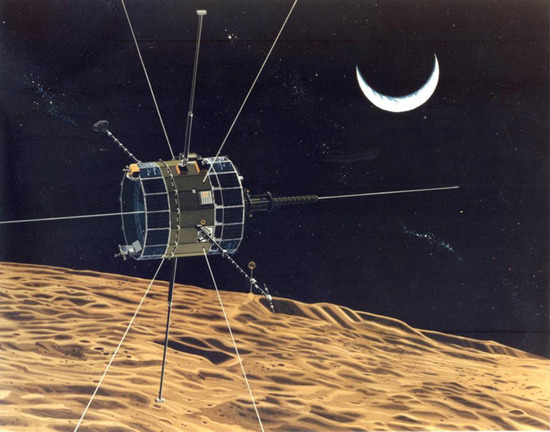
The mission to save ISEE-3 has is underway. The ISEE-3 Reboot Project has posted a crowdfunding campaign on Rockethub. When we first covered the ISEE-3 story no one had heard from it since 2008. Since then AMSAT-DL, an amateur radio group in Germany has received signals from the probe.
The ISEE-3 Reboot Project is being managed by [Dennis Wingo] and [Keith Cowing], the same two men who spearheaded the effort to recover NASA’s Lunar Orbiter images from old magnetic tapes. They did most of their work using restored 1960’s equipment in a vacant McDonald’s.
The goal of the ISEE Reboot Project is to return ISEE-3 to its original Earth/Sun Lagrange point L1 orbit. Once safely back in orbit, it will be used for STEM education, amateur radio solar predictions, and for science about the sun. In [Dennis Wingo’s] own words
If we can do this, we will have an open source, publicly accessible satellite data stream of the first open source satellite above Low Earth Orbit.
[Wingo] and [Cowing] aren’t alone in this effort; they are working with a venerable dream team. In addition to getting the nod from NASA, the team also has the help of [Dr. Robert Farquhar], the orbital dynamics guru who originally designed ISEE-3’s comet intercept orbit . [Farquhar] has an extremely personal reason to participate in this project. In 1982 he “borrowed” the satellite to go comet hunting. Once that mission was complete, he promised to give ISEE-3 back. [Dr. Farquhar] and his team designed the maneuvers required to bring ISEE-3 back to L1 orbit back in the 1980’s. This includes a breathtaking moon flyby at an altitude of less than 50 km. Seriously, we want to see this guy’s KSP missions.
Communicating with the ISEE-3 is going to take some serious power and antenna gain. The project has this in the form of a 21 meter dish at Moorehead State University in Kentucky, USA, and the Arecibo Observatory. Arecibo should be well-known to our readers by now. Moorehead and Arecibo have both received signals from ISEE-3. The reboot project team is also working directly with the AMSAT-DL team in Germany.
If this effort seems a bit rushed, that’s because time is very short. To implement [Dr. Farquhar’s] plan, ISEE-3 must fire its thrusters by late June 2014. In just two months the team needs to create software to implement ISEE-3’s communications protocols, obtain and install transmitters at Moorehead and Aricibo, and send some basic commands to the craft. Only then can they begin to ascertain ISEE-3’s overall health in preparation for a thruster burn.
If the ISEE-3 Reboot Project succeeds, we’ll have an accessible satellite well outside of low Earth orbit. If it fails, Issac Newton will remain at the helm. ISEE-3 will fly right past Earth, not to be seen again until August 2029.















” In just two months the team needs to create software” … And yet they’re not asking for coders, rocket scientists, or any other technical help, they just want cash…
Money is the critical bit here. All the coders in the world can’t do a bit of difference if they can’t pay for dish time, or track down documentation (which WILL require a not-insignificant amount of money).
Software is easy. There’s thousands of people who can write that software, and it would most likely get done in time. Provided, that is, we actually find the documentation for the original hardware and command codes, which NASA has probably trashed or forgotten about (as they do).
So yes they want cash. Without funding, this whole thing simply is not possible. Everything else is secondary.
they are probibly already up to their eyeballs in coders and rocket scientists. and what good is software when you cant afford the communication hardware and time on arecibo.
MSU is not too far from where I am. I wonder if there’s going to be anything interesting to go see there. I imagine it’ll just be someone plugging a laptop into the dish though.
They need to talk to these guys: http://www.seti.org/ata, they offered to be the downlink of the Google X Prize so they could probably come to an agreement. And they’re an SDR which should make it fairly simple to write the receive software for. Unfortunately they are receive only.
What about the arrays at Greenbank Observatory in West Virginia? Oh…I forgot, they are doing Horizonal RADAR detection along with M.I.T. Nevermind…although, the LARGE array could be used…;)
It should be Morehead State not Moorehead State.
At first I thought they meant Moorehead, Minnesota.
Something smells really fishy. They need $125K? That would be chump change for any gov’t organization or science/educational foundation. Heck even a private donation from Elon Musk, John Carmack or Bill Gates would cover the bill pretty quickly.
Why aren’t any big players stepping up for donations? Why does this require joe citizen to dig into his pockets? Crowd sourcing is the new get-rich-quick scheme.
Cynicism aside, this seems like a great project with huge educational and inspirational impacts.
I’m assuming that they haven’t asked the deep pockets for money is because it’s meant for the open source community. People who single handedly fund a project tend to make stupid requests.